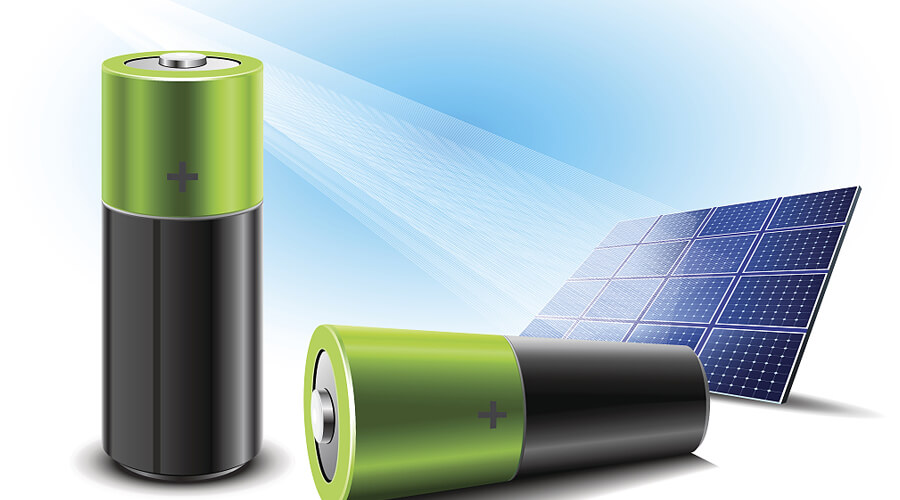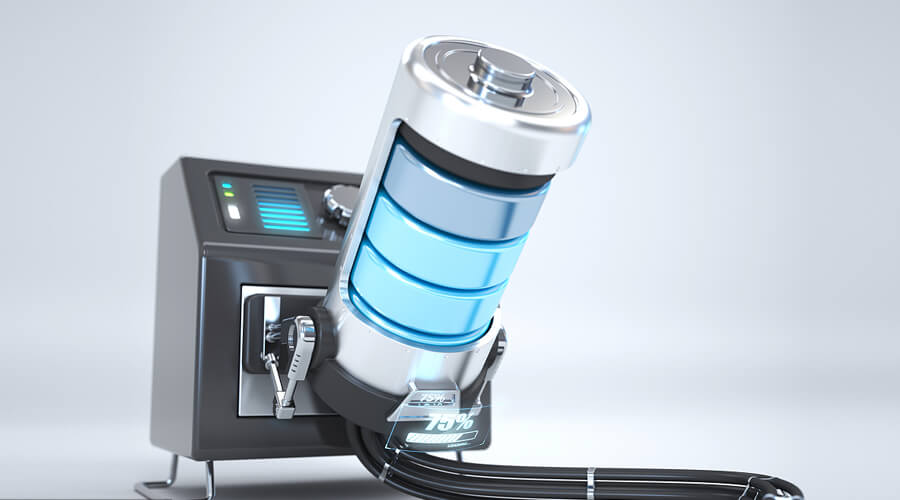Zinc-air Battery vs. Lithium-Usage and Differences
APR 11, 2020 Pageview:1975
Zinc-air batteries are categorized as metal-air cells. They are batteries powered by oxidizing zinc with oxygen from the air and have high energy densities. The cells are inexpensive to manufacture and their sizes come in a wide range from extremely small buttons cells used in hearing aids, to larger ones that are used in film cameras. The massive zinc-air batteries are applied in the manufacture of larger inventions such as electric vehicle propulsion and also in grid-scale energy storage such as solar systems.
These batteries consist of an anode made of granulated powder/ zinc, mixed with an electrolyte that usually has a gelling agent to maintain the contact between the electrolyte and the zinc granules. There is also a cathode reacts with the air to form an oxide that would complete the reaction and produce the required energy.
How they work
During discharge, an amount of zinc particles form s a porous anode that is usually saturated with an electrolyte. Oxygen present in the air reacts at the cathode to form hydroxyl ions which then move into the zinc past at the anode to form zincate. The reaction tends to release electrons that migrate back to the cathode while the zincate decomposes into zinc oxide and the water goes back into the electrolyte. The water and hydroxyl formed at the anode are recycled at the cathode, therefore, reducing any wastage. This reaction is said o produce a theoretical 1.65V which is later reduced to 1.4V in the available cells.
Normally, zinc –air batteries have some of the properties present in fuel cells/ batteries. The zinc is typically the fuel and the rate of reaction within the cells can be controlled be varying the air flow. Also, the oxidized zinc paste at the anode can be replaced with fresh paste. These batteries have been used to replace the mercury batteries that were once used in film cameras a while back but have proven to contain a shorter life-span. Their future, however, in the deployment in electric vehicles seems bright and also in large scale soar systems.
Types of Zinc-air batteries
There are three types of zinc-air batteries in the industry and they include the primary non-rechargeable cells, secondary rechargeable cells, and the mechanical rechargeable zinc-air batteries.
1.Primary zinc-air batteries
These are zinc-air batteries that are non-rechargeable; therefore, once you have exhausted all their capacities, they need to be disposed of appropriately. The primary cells are made in a button design to about 1Ah and also come in prismatic shapes for various portable device which are otherwise manufactured with capacities of about 5 – 30 Ah. When I comes to hybrid cell cathodes of zinc-air batteries, manganese dioxide is usually introduced to pave way for high peak currents.
Zinc-air button cells are normally very effective but their construction or composition cannot be expanded or extended to a much larger size zinc-air battery due to various reasons. These reasons include air diffusion performance, heat dissipation, and also leak issues. Stacking prismatic cells together to form one large battery can prove challenging because need air channels within the batteries and may require a fan to force the air through the compressed stack.
1.Secondary zinc-air batteries
These are rechargeable zinc-air batteries and, therefore, once you exhaust their capacities, you can always plug them into a charger and take them back to full capacity. These zinc-air cells need zinc precipitation gotten from a water-based electrolyte for them to be controlled closely. However, there are various problems that these type of zinc-air batteries face and they include dendrite formation, non-uniform dissolution of zinc and the limited solubility in various electrolytes.
It is somehow difficult to electrically reverse the reaction found at the cathode to produce oxygen from discharge reaction by-products. The charging voltage of these cells is also much higher than the discharge voltage thus, producing a cycle energy efficiency that is as low as 50%. A secondary zinc-air battery offers a much lower material cost and higher specific energy as compared to a normal primary zinc-air battery.
2.Mechanical recharge zinc-air battery
These systems tend to mechanically replace the electrodes in a zinc-air battery and thus, operate as renewable primary batteries. They also tend to make use of zinc powder and or other scientific methods to replenish the reactants. The mechanically recharging systems of zinc-air batteries are used in electric vehicles. Their benefits over secondary zinc-air batteries include decoupling of energy as well as power components, providing a flexible platform for different rates of charge as well as energy capacity requirements.
Is zinc used in lithium batteries?
Most of the time, zinc is used to galvanize other metals like iron which prevents rusting. Also, zinc can be used in alloys such as brass and aluminum. Some of these alloys are used in the manufacture of various lithium batteries in different components within the cells. Therefore, zinc is used to make various versions of lithium batteries.
What is the difference between zinc-air battery and lithium?
Lithium batteries are primary batteries with metallic lithium as the anode material and are referred to as lithium-metal batteries. They also use manganese dioxide as he cathode with a lithium salt that is dissolved in an organic solvent. When it comes to zinc-air batteries, they use zinc powder at the anode and are considered metal-air batteries. They provide higher energy densities than lithium batteries and are more environmentally friendly.
Can zinc-air battery replace lithium battery?
The non-rechargeable zinc-air batteries tend to have a much higher density and specific energy ration as compared to any other types of battery including lithium ones. This is because the atmospheric air is one of the batteries reactants and is available in abundance. The air is usually not packaged with the battery allowing it to more zinc a the anode increasing the capacity for a specified weight or volume. Zinc-air batteries also have a long shelf-life if it is sealed to keep the air out and stored at the right temperature.
As such, zinc-air batteries can definitely replace the lithium battery however, because of the difficulty is recharging the cells, they haven’t taken up the challenge yet.
Conclusion
The widespread application of zinc-air batteries has been delayed because to date, recharging them has proven a bit difficult. This is because electrocatalysts that efficiently reduce and generate oxygen during charge/discharge cycles are absent. However, intense research is under way to overcome this issue and soon we may have a viable replacement for lithium batteries in the market.
Leave Message
Hottest Categories
-
Hottest Industry News
-
Latest Industry News














